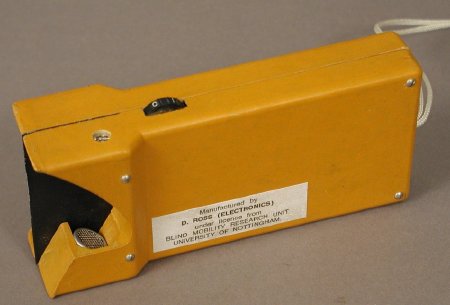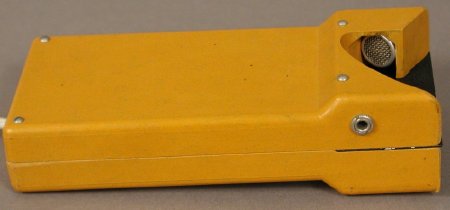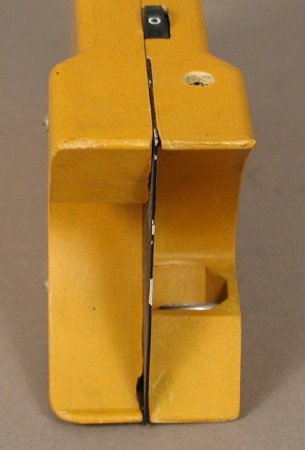Object ID:
2007.33.17
Title:
Nottingham Obstacle Detector
Description:
Orange enameled plastic body, rectangular with slight flare outward at head; head has scooped, curved profile with two round, screen covered transducers aimed in opposite directions and separated by black aluminum panel; rotary on/off dial on top with settings from 0 (off) to 5; just in front of dial is a small screen covered speaker aperature; white braided polyester wrist cord and headphone jack on back; recharging jack on bottom front; label on side, "Manufactured by D. Ross (Electronics) under license from Blind Mobility Research Unit University of Nottingham".
Dimensions:
H-2.625 W-1.625 D-6 inches
Date:
ca. 1973
Place of Origin:
Nottingham, England
Provenance:
The Nottingham Obstacle Detector was developed at the University of Nottingham in the early 1970s. It was commercially available by the late 1970s and still on the market as late as 1997. Similar to the Mowat Sensor, it emitted pulses of ultrasonic sound and used reflected sound to detect obstacles in the path of the user. Where the Mowat output results via a vibrating handle, the NOD sounded eight musical notes, each note corresponding to a 1' increment of distance, going down the scale as the object was approached.
Credit Line:
Gift of Association for Education and Rehabilitation of the Blind and Visually Impaired


